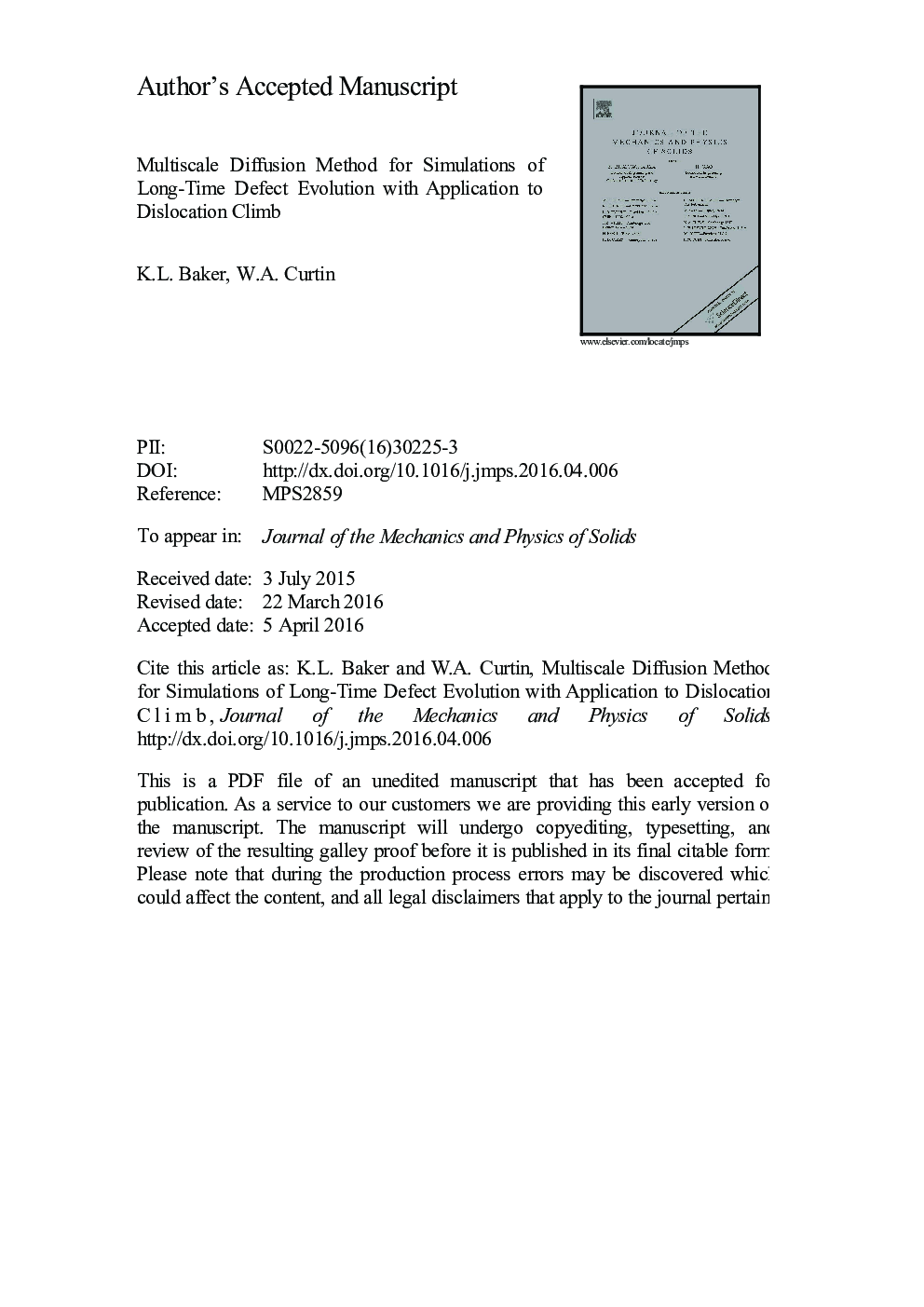| Article ID | Journal | Published Year | Pages | File Type |
|---|---|---|---|---|
| 7177771 | Journal of the Mechanics and Physics of Solids | 2016 | 27 Pages |
Abstract
In many problems of interest to materials scientists and engineers, the evolution of crystalline extended defects (dislocations, cracks, grain boundaries, interfaces, voids, precipitates) is controlled by the flow of point defects (interstitial/substitutional atoms and/or vacancies) through the crystal into the extended defect. Precise modeling of this behavior requires fully atomistic methods in and around the extended defect, but the flow of point defects entering the defect region can be treated by coarse-grained methods. Here, a multiscale algorithm is presented to provide this coupling. Specifically, direct accelerated molecular dynamics (AMD) of extended defect evolution is coupled to a diffusing point defect concentration field that captures the long spatial and temporal scales of point defect motion in the presence of the internal stress fields generated by the evolving defect. The algorithm is applied to study vacancy absorption into an edge dislocation in aluminum where vacancy accumulation in the core leads to nucleation of a double-jog that then operates as a sink for additional vacancies; this corresponds to the initial stages of dislocation climb modeled with explicit atomistic resolution. The method is general and so can be applied to many other problems associated with nucleation, growth, and reaction due to accumulation of point defects in crystalline materials.
Related Topics
Physical Sciences and Engineering
Engineering
Mechanical Engineering
Authors
K.L. Baker, W.A. Curtin,
